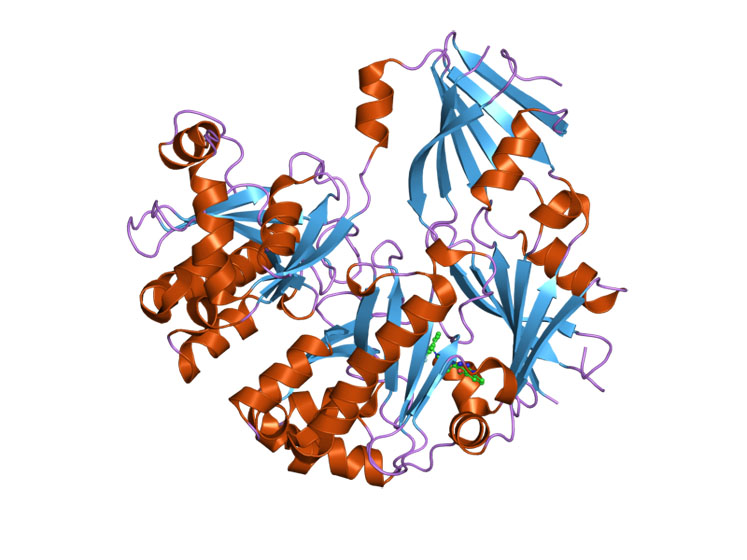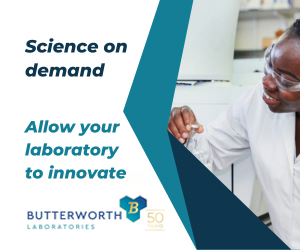"To provide a one-stop enzymatic solution platform, a CDMO should have the following capabilities: a very large enzyme library; a highly professional and diverse team of skilled employees; a high throughput screening lab; and enzyme evolution capabilities that include artificial intelligence (AI) modelling, molecular biology, enzyme fermentation, as well as process development, downstream processing and scale-up capabilities." The statement of Dr Jingyang Zhu, VP of Process Chemistry Enabling Technologies at STA Pharmaceutical (WuXi STA), a WuXi AppTec company, highlights the sheer scale of services and capabilities of a modern CDMO.
The large enzyme library is key to success; so, to stay ahead of market requirements and client needs, WuXi STA has grown its enzyme library to include more than 2000 substances in just two years.
Jingyang explains: “We started a collaboration with a top academic institute that gave WuXi STA access to a library of more than a thousand wild type or proprietary enzymes.
"At the same time, we’ve also been building and developing our own enzyme evolution capability through a partnership with one of our large pharma clients, which has enabled us to quickly gain a large number of proprietary evolved enzymes.”
There are, of course, a number of benefits associated with having a large in-house library. Commenting on whether WuXi STA’s clients are now more often asking for procedures that employ biocatalytic processes, Jingyang says: “A large enzyme library does indeed allow us to rapidly find enzyme-based solutions for our clients that are specifically seeking biocatalytic solutions,” adding that the company sees that more and more biocatalytic processes are included as greener and more cost-effective options for solving our clients’ challenging synthetic problems and bringing more sustainable commercial processes.
Discussing whether biocatalytic processing slows down route scouting, Jingyang is keen to point out that that’s not the case. “As a matter of fact,” he says, “in most cases, biocatalysis could actually facilitate the route scouting process and help clients to identify cost-effective solutions more rapidly.”
Scale-up challenges
In many ways, an enzymatic process is quite similar to a chemical one. An enzyme could be regarded as a reagent or catalyst. Jingyang explains: “You can use whole-cell enzymes or an enzyme powder in a synthetic process; the challenge when running an enzyme-based procedure is that the enzyme itself is susceptible to contamination, deactivation and inhibition." Jingyang adds that to be effective, a CDMO should have sufficient enzyme production knowledge and the technical capability to handle both the upstream and downstream stages of the process.”
He continues: “To optimise production and expedite time-to-market for our clients, we encourage them to consider an enzymatic process during the early stages of research and development."
A CDMO should have sufficient enzyme production knowledge and the technical capability to handle both the upstream and downstream stages of the process
"Our high-throughput screening laboratory is often able to provide a rapid screening service for this very purpose. And, for route scouting and late-stage projects, we can broaden the screening process by performing high-throughput enzyme evolution.”
Delving a little deeper, I wonder whether Jingyang can cite a case study wherein an enzymatic process might have made the difference between a product falling and actually making it to commercial production.

“Yes,” says Jingyang, not surprisingly, adding: “A client was working with a key intermediate that was derived from five-step chemical synthesis and was very expensive. They came to us and suggested that if the cost of this intermediate couldn’t be reduced, the drug may not able to go to the market. We developed a one-step enzymatic route using our evolved enzyme that reduced the cost of the intermediate by two thirds and saved the project.”
In a similar vein, I note that, in some cases, the company has been able to improve yields from 20% using a chiral acid to more than 45% and ask how that was achieved.
“Chemical resolution is based on the solubility differences of the two diastereomer salts,” says Jingyang: “To achieve higher enantiomer purity levels, it generally requires multiple crystallisations. However, this certainly reduces the overall yield."
"With enzymatic resolution, however, the enzyme could specifically convert one enantiomer to the desired form but leave the other one untouched. The end result is the ability to obtain higher levels of purity (>99%) and increased product yields (>45%).”
In a rather more quick-fire part of our discussion, I tackle some of the more fundamental aspects of biocatalysis, as follows:
KSR: How long does it take to source a viable enzymatic process?
JZ: It generally takes between a few days and several weeks to respond to early-stage projects. For late-stage projects, it might take several months to successfully undertake extensive optimization and enzyme evolution, if necessary.
KSR: Are you now able to produce all the enzymes you need in-house for commercial products or is some external sourcing still required?
JZ: We are currently capable of producing enzymes in-house for small-volume projects (<1 ton) … and we will be able to support larger (>1 ton) volumes in 1–2 years.
KSR: What types of projects are best suited to enzymatic processing and how many are currently active?
JZ: Biocatalysis is ideal for projects such as making chiral compounds (chiral alcohols and amines, for example) or for highly selective reactions (such as hydrolysis). WuXi STA currently has dozens of active projects underway.
KSR: What is the structure of your biocatalysis team?
JZ: Our employees comprise a diverse group of scientists and engineers, including biochemists, microbiology engineers, bioengineers, computational scientists, process chemists, process engineers, analytical chemists, production personnel, etc. The diverse team is critical to delivering our one-stop enzyme solutions.
“There are many reasons to consider biocatalysis for your project,” concludes Jingyang: “especially when your molecule needs a greener or more efficient enantiomer resolution or transformation. Our comprehensive one-stop platform offers enzyme screening, enzyme evolution and fermentation, as well as process development and cGMP production.”



